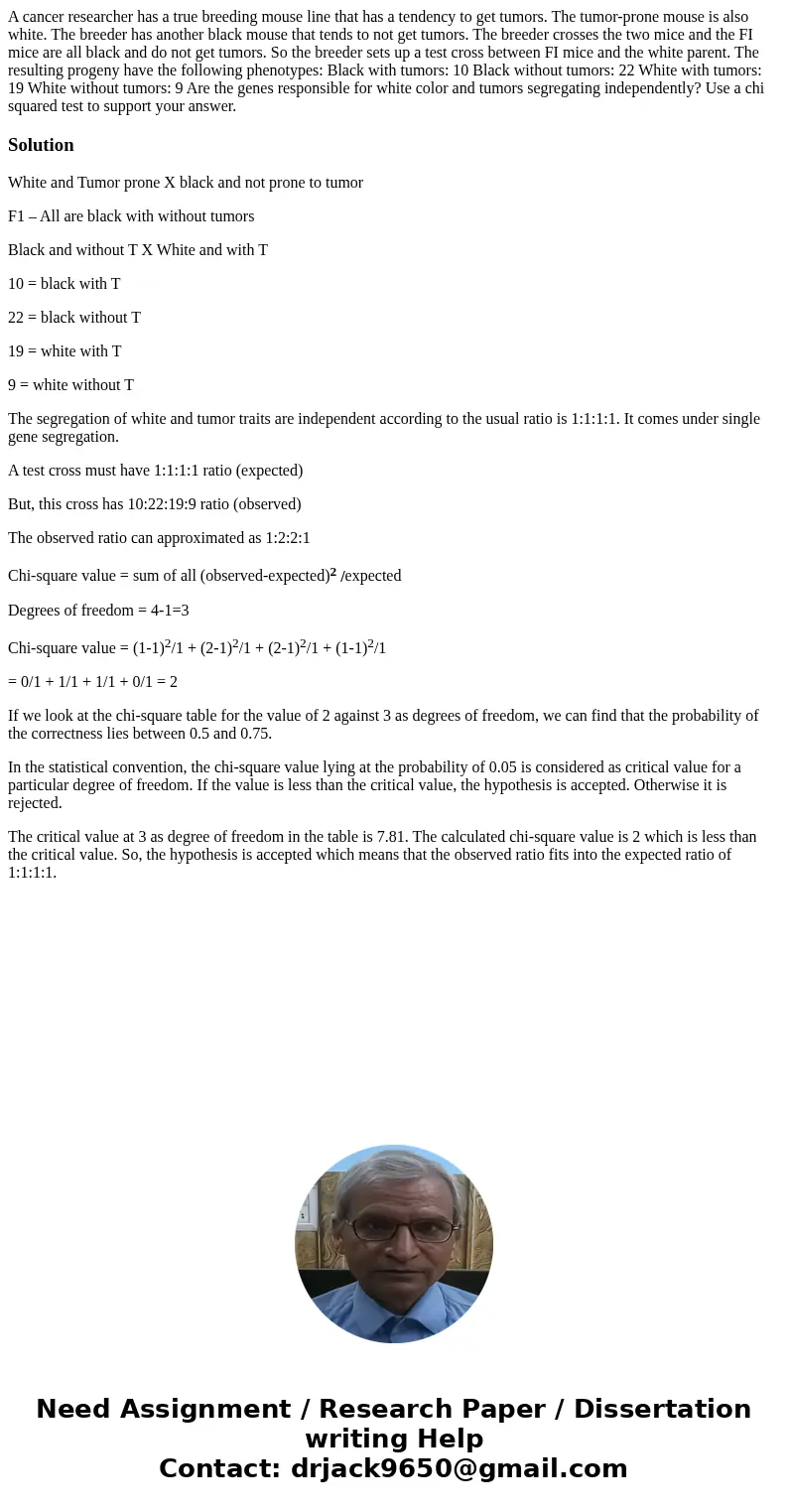A cancer researcher has a true breeding mouse line that has
Solution
White and Tumor prone X black and not prone to tumor
F1 – All are black with without tumors
Black and without T X White and with T
10 = black with T
22 = black without T
19 = white with T
9 = white without T
The segregation of white and tumor traits are independent according to the usual ratio is 1:1:1:1. It comes under single gene segregation.
A test cross must have 1:1:1:1 ratio (expected)
But, this cross has 10:22:19:9 ratio (observed)
The observed ratio can approximated as 1:2:2:1
Chi-square value = sum of all (observed-expected)2 /expected
Degrees of freedom = 4-1=3
Chi-square value = (1-1)2/1 + (2-1)2/1 + (2-1)2/1 + (1-1)2/1
= 0/1 + 1/1 + 1/1 + 0/1 = 2
If we look at the chi-square table for the value of 2 against 3 as degrees of freedom, we can find that the probability of the correctness lies between 0.5 and 0.75.
In the statistical convention, the chi-square value lying at the probability of 0.05 is considered as critical value for a particular degree of freedom. If the value is less than the critical value, the hypothesis is accepted. Otherwise it is rejected.
The critical value at 3 as degree of freedom in the table is 7.81. The calculated chi-square value is 2 which is less than the critical value. So, the hypothesis is accepted which means that the observed ratio fits into the expected ratio of 1:1:1:1.

 Homework Sourse
Homework Sourse